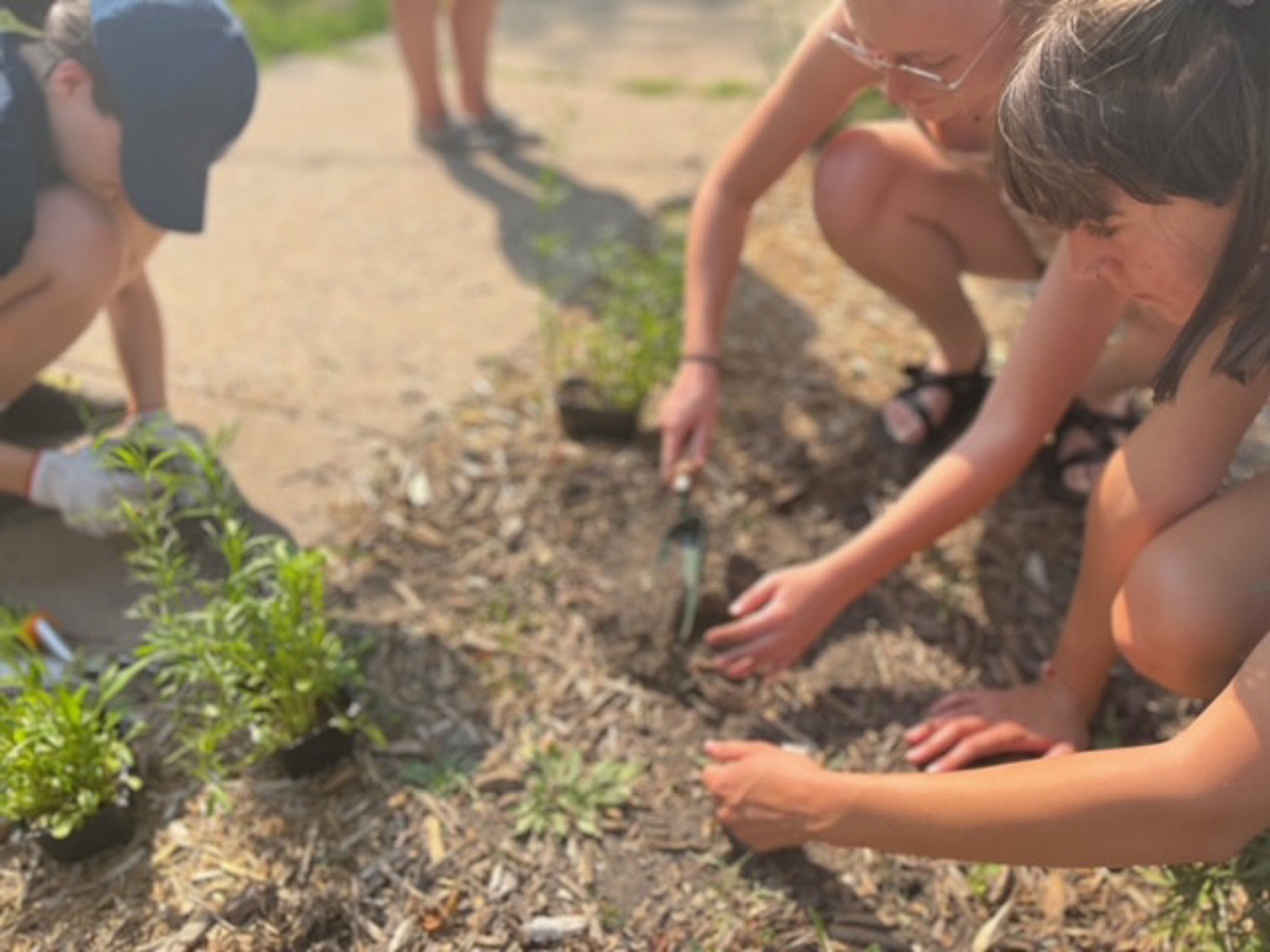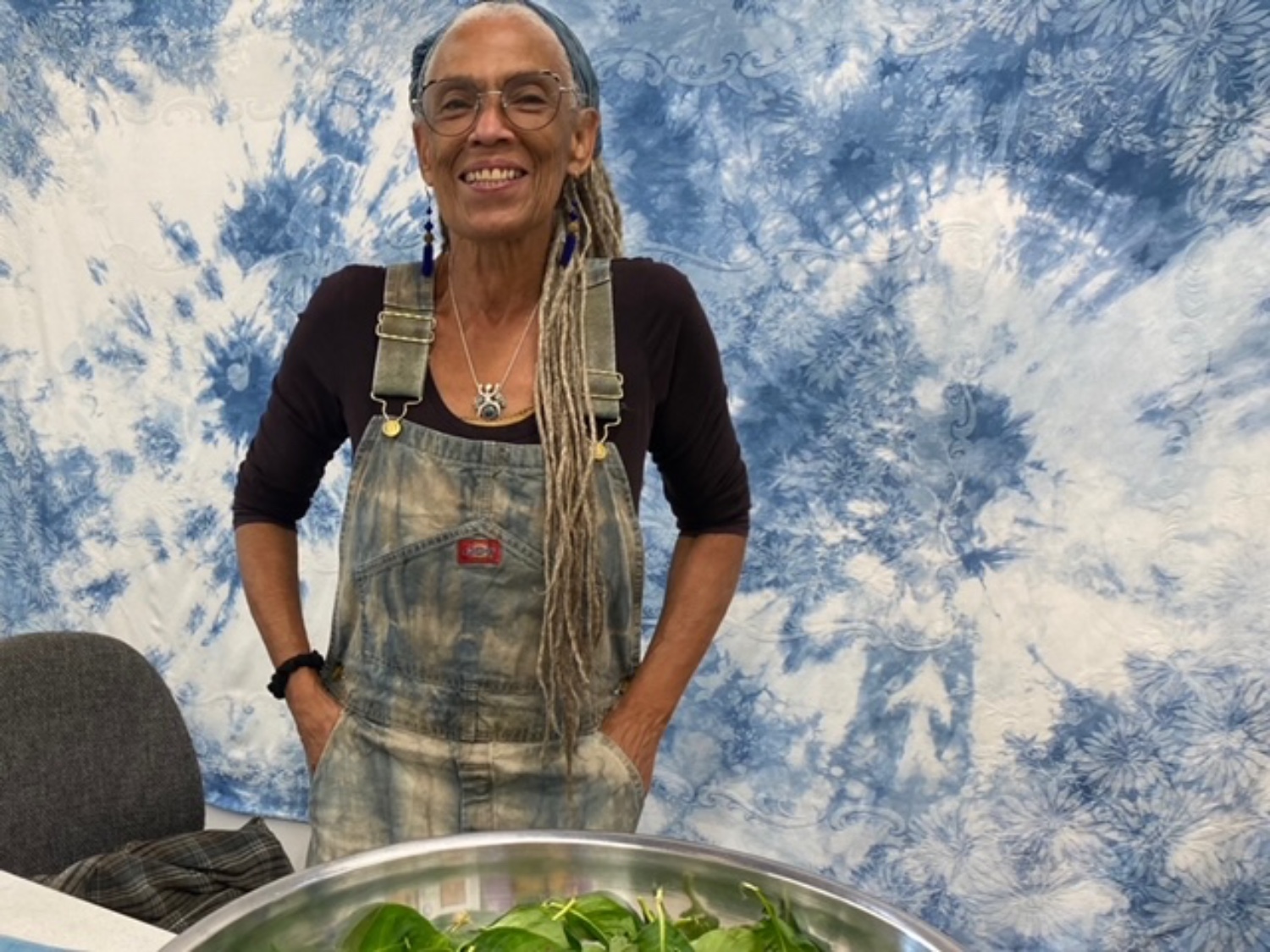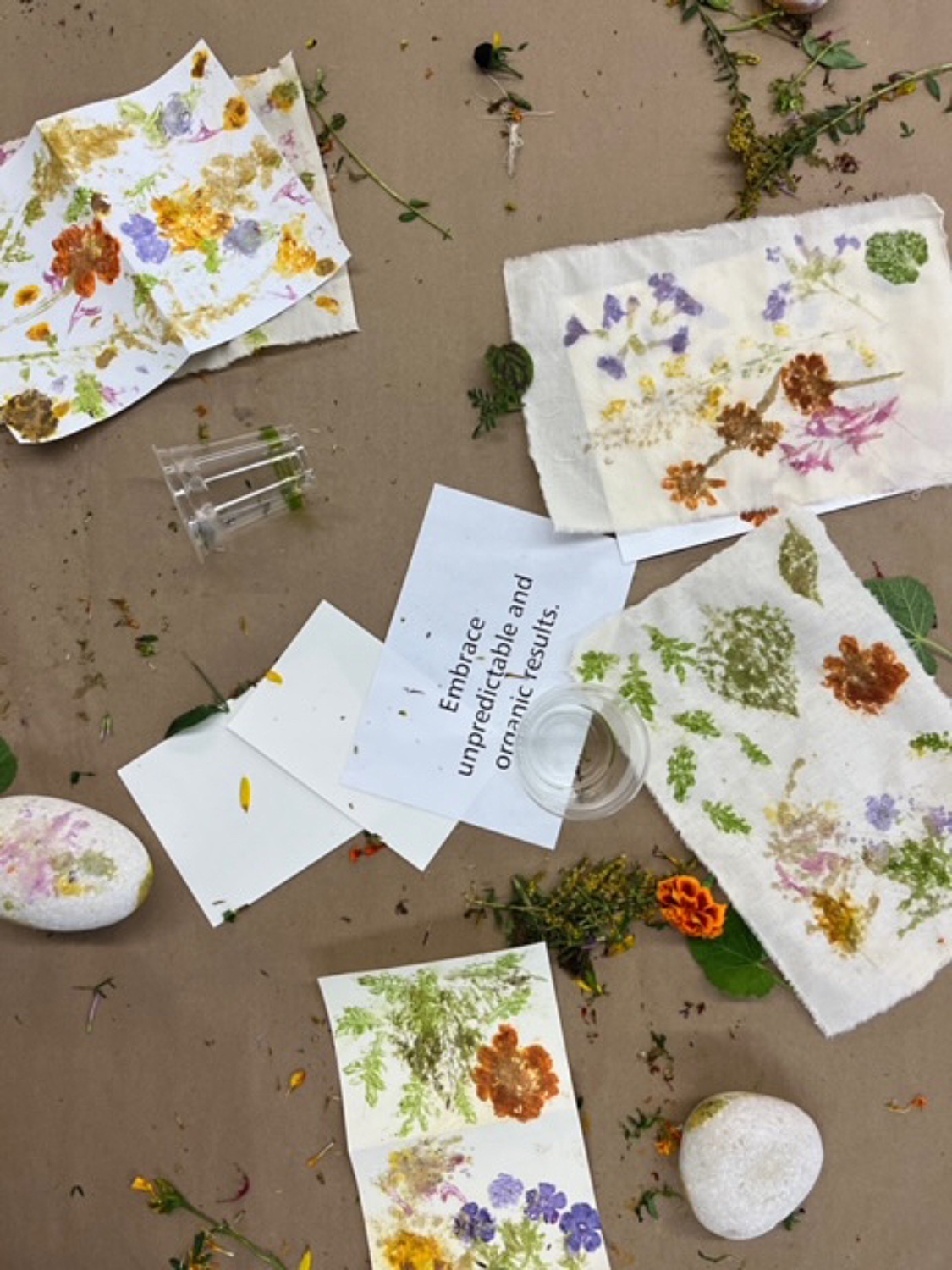
Artists and Gardens: Textile Center
Published September 16th, 2023 by Nicole Thomas
A conversation with three experts on natural dyes, invasive species, and how foraging can build community
I had the honor of meeting with a crew of people from Textile Center including Chloe Russell Chang, the Education Associate; Deb Reierson, Master Gardener; and Ceci Lewis, an instructor and natural dye expert. Each of them holds an abundance of information surrounding plants, natural dye processes, and community access to the textile arts.
We started the conversation by noting significant barriers to gardening including:
-
Geographical location with Minnesota’s shorter growing season
-
Free time dedicated towards tending a garden
-
Indoor and outdoor space to start seeds and grow plants
From there the conversation blossoms into what I imagine is only a snippet of their collective knowledge.
Nicole Thomas: Tell us about your garden.
Chloe Russell Chang: Textile Center’s A Garden To Dye For started as an educational garden — as far as I understand — and now it’s transitioning into this functional garden that supports our class schedules in the summer and fall. It has taken a lot of coordination between Deb and Ceci to help it be functional as well as showcasing a wide, wide variety of plants.
The volunteers that we've been working with have direct access to Deb's knowledge as a master gardener. Volunteers are also offered opportunities to use the dye garden that they're helping with, such as foraging plants that are in season and plants that we aren't directly using for classes right away.
NT: I’m interested in what we talked about with location. Are there only certain varieties or species for natural dyeing that are available in Minnesota?
Deb Reierson: Yes, there are a lot of plants that just will not overwinter here. Not only is there a short season, but they just won’t live through the winter. Some of the plants will drop seeds that will come up the next year. Germination varies from species to species, and it depends on the kind of winter we have, as well. We had a lot of snow last winter, so a lot of plants lived. Right now we’re trying to transition the garden so it requires less maintenance, like more perennials and fewer labor intensive annuals. To provide a variety of color to both make a beautiful garden and useful garden for dyers, there are some plants that need to be started indoors in the spring.
Ceci Lewis: About the Dye Garden at Textile Center — Labor intensive is the word. All I did for 3 years was dig out weeds and then put some indigo in there. I dug out vine weed and Queen Anne’s lace, an invasive species to Minnesota. There were also a lot of madder roots there, which we used in a red dye class.
It’s important to study what is invasive to the particular area you live in, because there are people in the West planting Woad and they’re not supposed to do that.
DR: Yeah, when we're just talking about natural dyes you have to research. There's a lot of invasive species that are wonderful dyes. You just don't want to plant them in your garden because you can go out and forage for them on public land.
CRC: A lot of the native plants for Minnesota are also forageable and in the fall we’ll have a bike, forage, and dye class. Folks will start out by biking along the Greenway collecting forageable dye materials and then end up with their bicycles back at Textile Center. They will use what they foraged in the dye lab. Certain plants — we don't even need to plant more. Like Goldenrod, it just shows up. Same with milkweed and sumac and all of that. They'll just be readily available for that class.
CL: I think it’s important to revisit the issue of small spaces and lack of time. One of the things I always tell people is that what we have is community. And we don’t always pay attention to it. There are places I’ve driven past with literal fields of marigolds that these homeowners plant year after year. It's gorgeous. When you don’t have the space or the time, but you have this deep interest, you can gently approach that person when you see them outside working. Let them know how you appreciate what they have done. Let them know that you're into natural dying, that you've been told that people have to deadhead this stuff, and that you would be a very happy recipient of deadheaded flowers. Which you can then use to dye, and you should return with a gift for that person. It might just be a little silk scarf or bandana or something.
We live in a community. And there shouldn't be anybody here who doesn't have access. That's how we stop being strangers to one another.
CRC: Honestly, part of the care of the dye garden at Textile Center involves continued deadheading and maintenance, which is something that is really helpful to us. We can't always keep up with the amount of blooms and output from the garden. That’s something we offer to volunteers and we'd be really open to that if people wanna come help us out and then leave with deadheaded items. We would love to get to know people who live nearby and want to experience the garden here before planting their own or just as a curiosity. Even if it's just for a day or so as an experience.
 Volunteers planting indigo in the garden, image courtesy of Chloe Russell Chang.
Volunteers planting indigo in the garden, image courtesy of Chloe Russell Chang.
NT: I’m curious if you’ve noticed any differences between natural dyes and synthetic dyes?
CL: The word “art” is serious here because one of the things that we get out of our dye garden is pigment. What can you do with pigment? You can make art in lots of different ways beyond just on cloth.
I do not work for these people. I'm not getting paid, but I would tell anybody quite honestly to get the book The Art and Science of Natural Dyes: Principles, Experiments, and Results. This book is worth its weight in gold. You can learn from indigo to many other dyes. From getting stuff out of your yard to buying commercially. This is the most concentrated book and will also help you save money.
CRC: It looks like we have 3 copies of this book in the library at Textile Center if people want to come look through it. Textile Center’s Pat O’Connor Library is open to the public, for walk-in perusal. Textile Center members may check out books to take home, too.
DR: The wonderful thing about natural dye versus synthetic dye is there's a real subtlety to them. I mean people started to gravitate toward synthetic dyes to get some really brilliant pigments. Sometimes you want that. But you know some of the subtleties of natural dyes and the softness sometimes can just be so welcoming and warm. I think there are so many things you can do with them.
CRC: It's a way to eliminate waste as well, like using leftover food items that you wouldn't necessarily find edible, you know, husks and things from various plants that were used for cooking. There are a lot of plants which are edible and create dye in tandem. It's like part of using the whole plant.
CL: Last fall I poured the indigo out of two drums that were down in my basement. My basement is too cold in the winter for the dye to turn without me heating it. So it just lay fallow down there. I didn't do anything to it except put essential oil on the top of it, because it would get moldy. I didn’t stir or tend it at all over the winter. And just yesterday, all I did to it was put a whole bunch of pickling lime in each one to bring it up between ph11 and 12. I stirred it up real good from the bottom. I came back four hours later and it was reduced. That’s really durable. I have an iron vat down there that I’ve had probably since 2015 and all I have to do is tune it up.
It’s also a lot less harmful. The hydro sulfide that is used to reduce synthetic indigo smells like outhouse because it’s off gassing sulfur. It just stinks. It’s not good for you to breathe, but it’s so efficient! You pour that stuff in the vat, and it’s ready in 10 minutes.
CRC: If you were curious about witnessing the differences for yourself, we do a fresh indigo class which Ceci teaches at the end of the season, in the late fall. We also sell a synthetic indigo kit in the shop.
It's a take home kit that includes a plant and you do a guided fresh indigo leaf dying process in your own home without any chemicals with just ice and water, the indigo leaves, and the substrate of your choice. We also have a $15 or $20 synthetic indigo kit in the shop and that's something that you could make a really direct comparison with in terms of the properties of each dye material, the range of colors, what reactions happen, and what you're seeing in front of your own eyes.

Ceci Lewis during a fresh leaf indigo class last year, image courtesy of Chloe Russell Chang.
NT: Anything else you’d like to add?
CRC: If folks are interested in learning directly from Ceci Lewis about natural dye processes, she can be requested as an instructor for a Make + Take class in our dye lab. If folks would like to learn from Deb’s gardening expertise either this year, or in the spring, they can sign up to be a dye garden volunteer using this Google form or email me!
Shortly after this interview I experimented with my own swatches of fabric with foraged plants in preparation for a workshop with children. It was exciting to use household items in my kitchen and learn the chemistry behind natural dyeing.
This interview was edited for brevity, but I highly recommend visiting Textile Center. They provide a variety of accessible resources for those interested in both gardening and natural dyeing. ◼︎

Craft Night: Dye Garden Harvest in August, image courtesy of Chloe Russell Chang.
To learn more, visit textilecentermn.org, sign up for a class, or follow them on Instagram @textilecentermn.
Banner image: Deb Reierson with a bandana that was dyed using soil from the garden (dorozome method), image courtesy of Chloe Russell Chang.
This activity is made possible by the voters of Minnesota through a grant from the Metropolitan Regional Arts Council, thanks to a legislative appropriation from the arts and cultural heritage fund. 
We can't do it without you.
Help keep independent arts journalism alive in the Twin Cities.